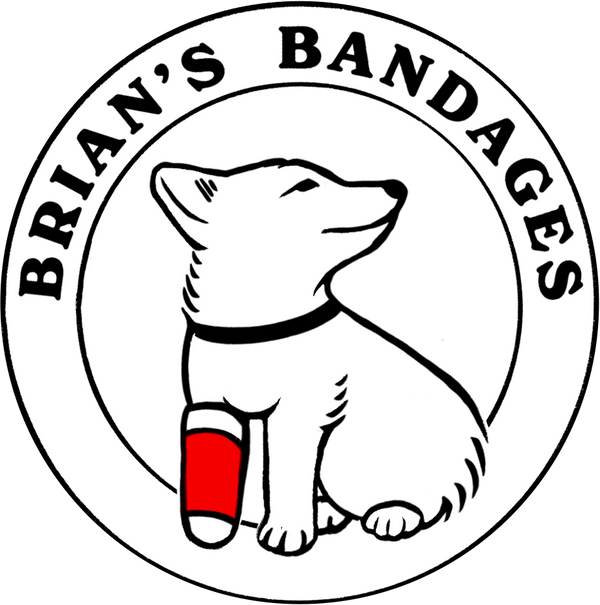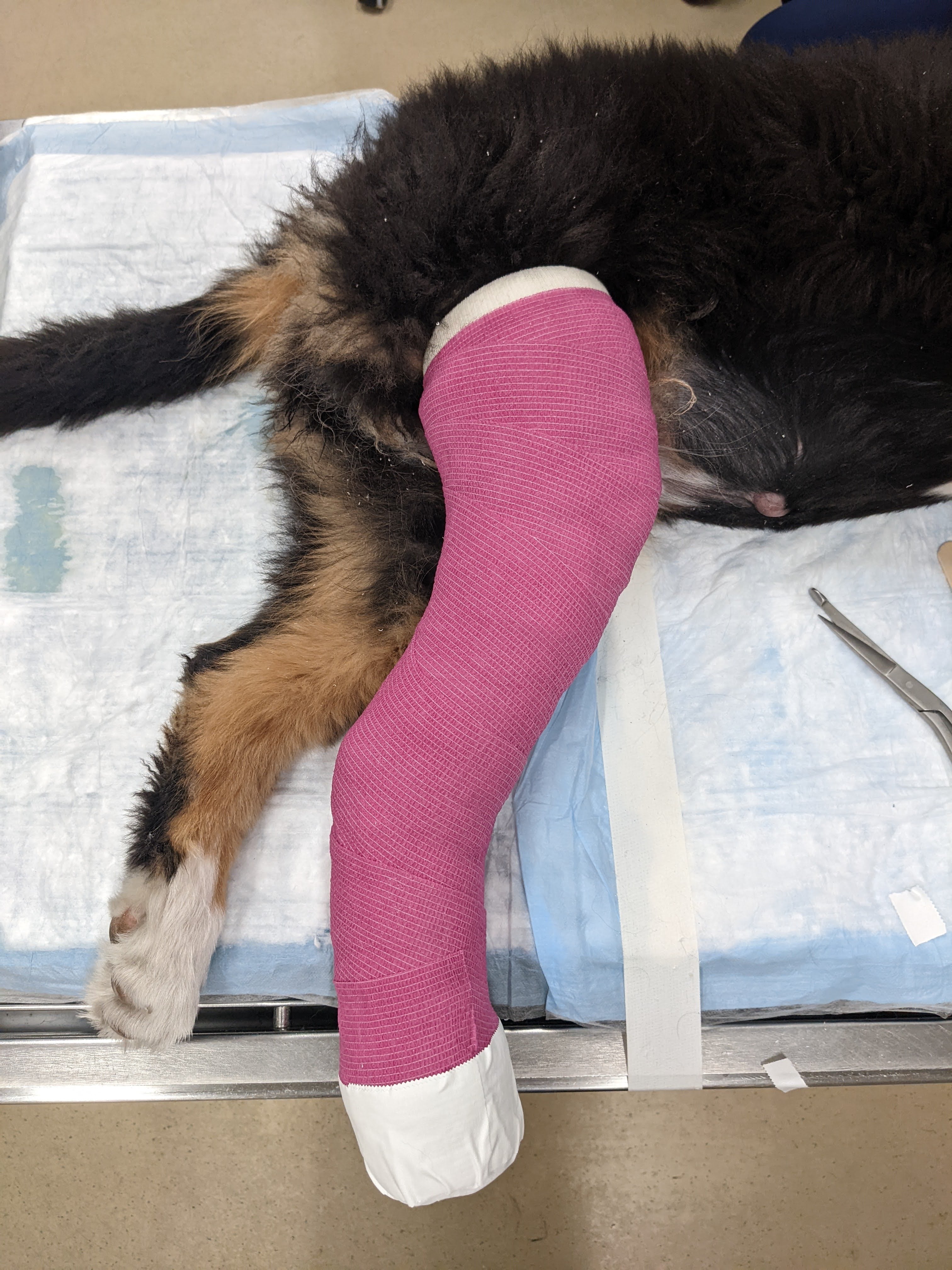
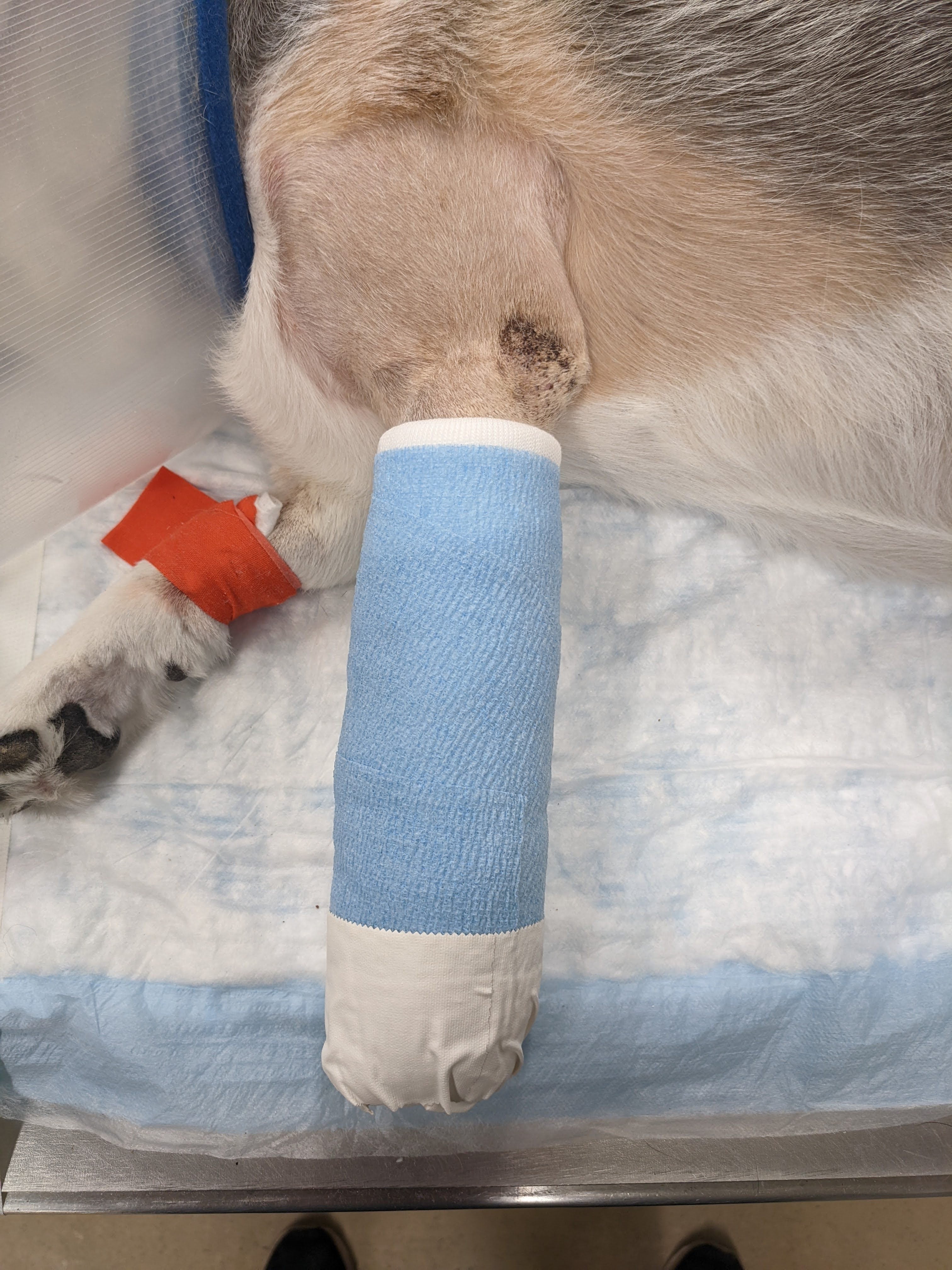
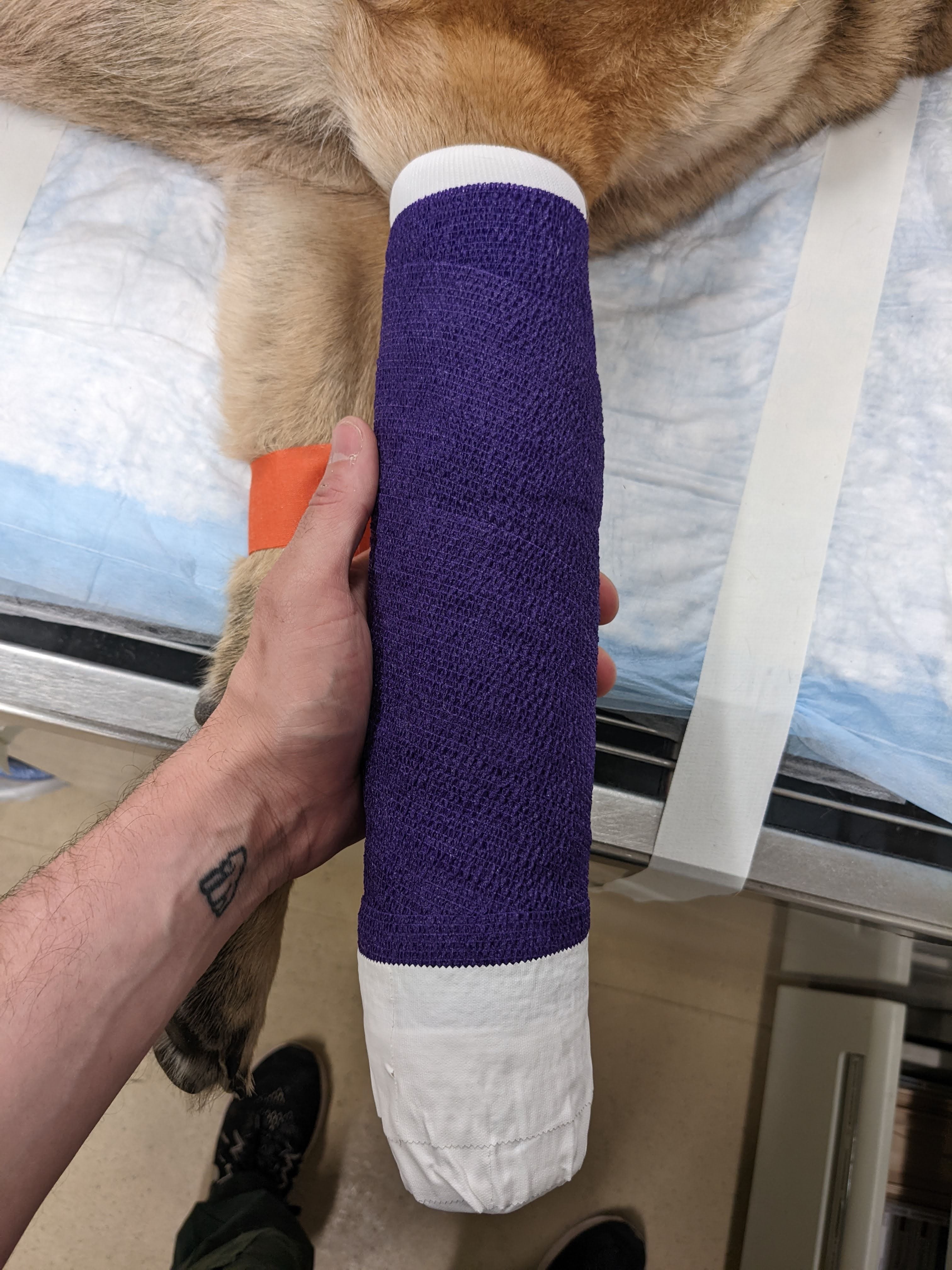
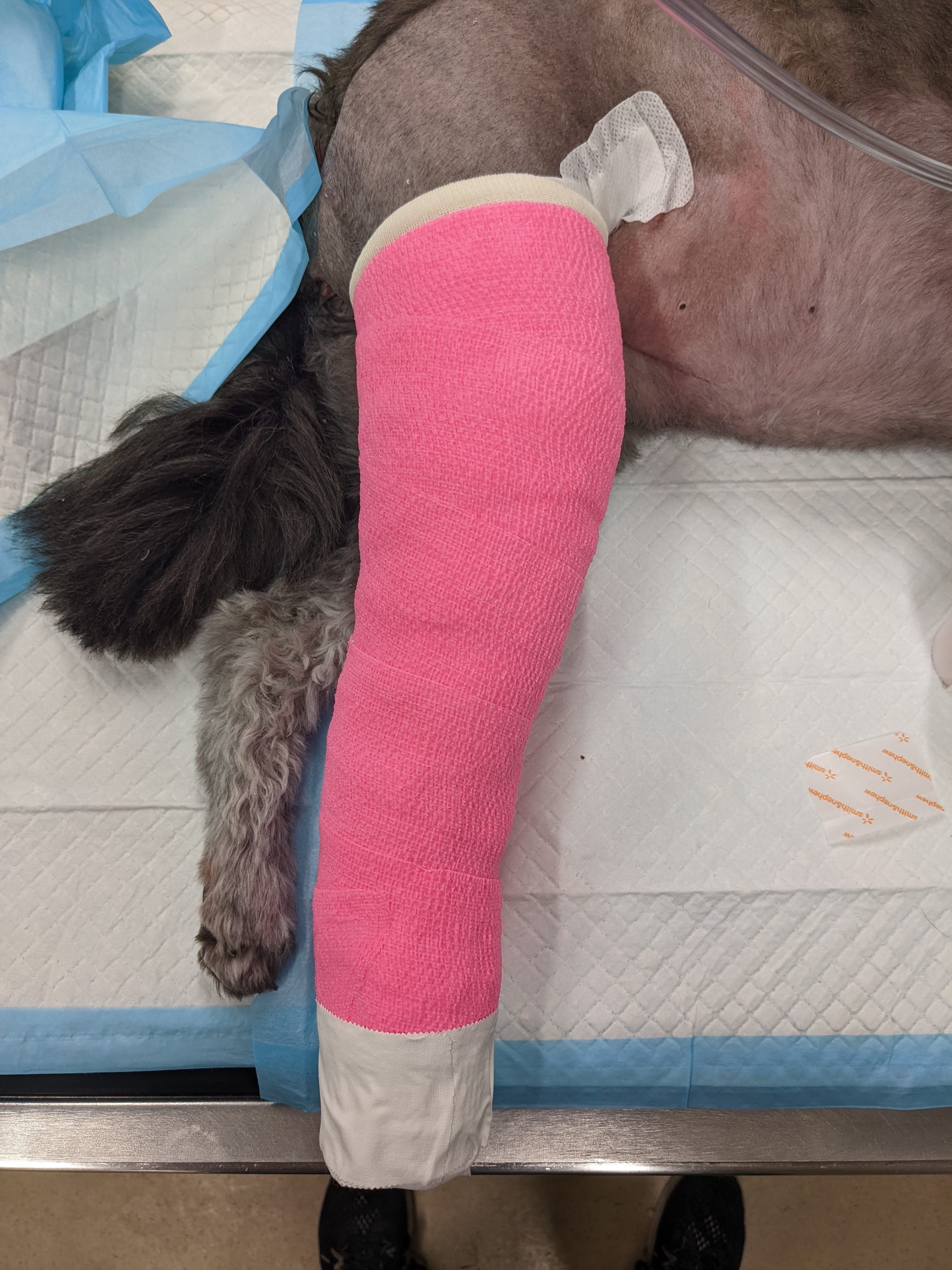
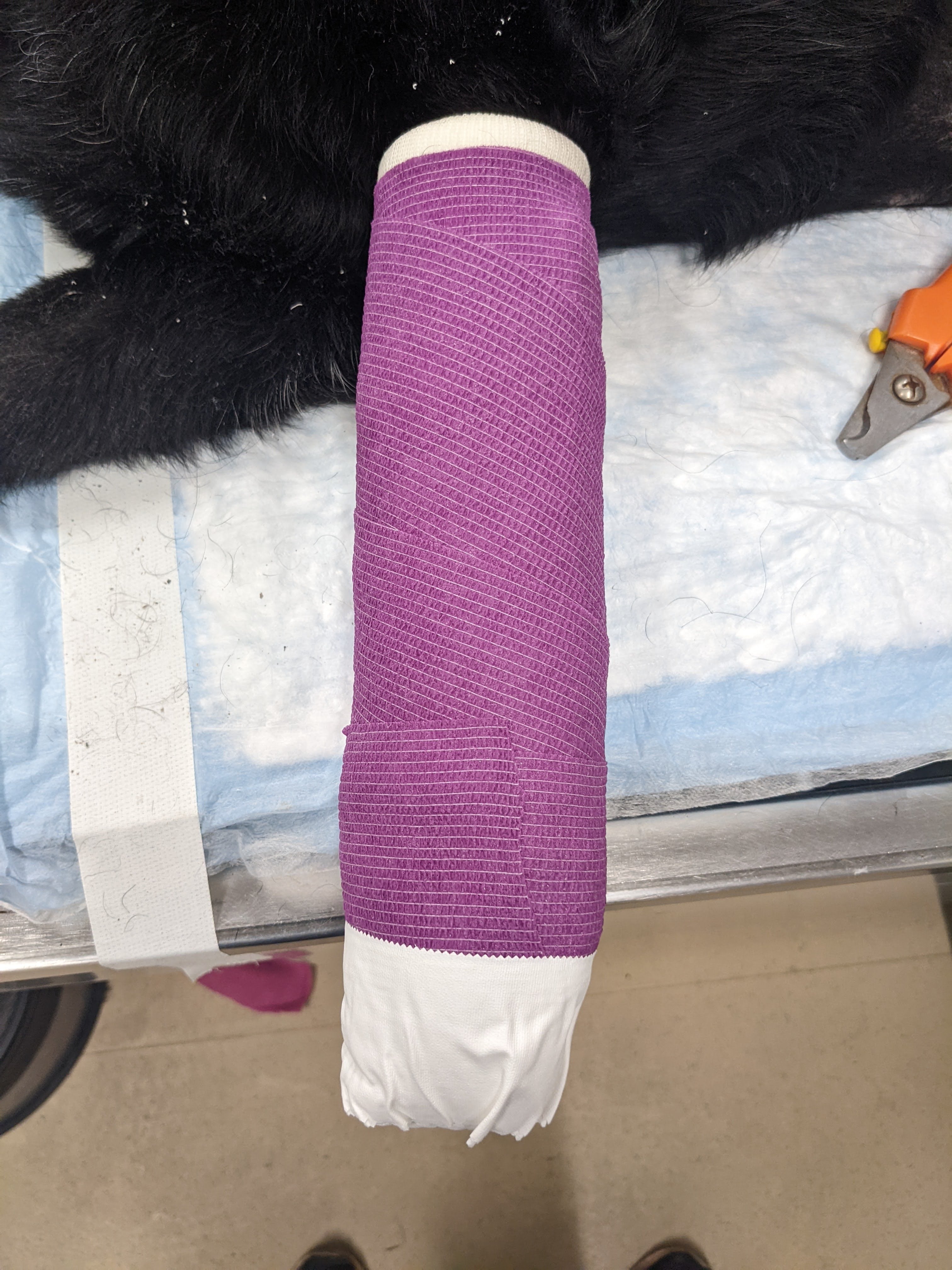
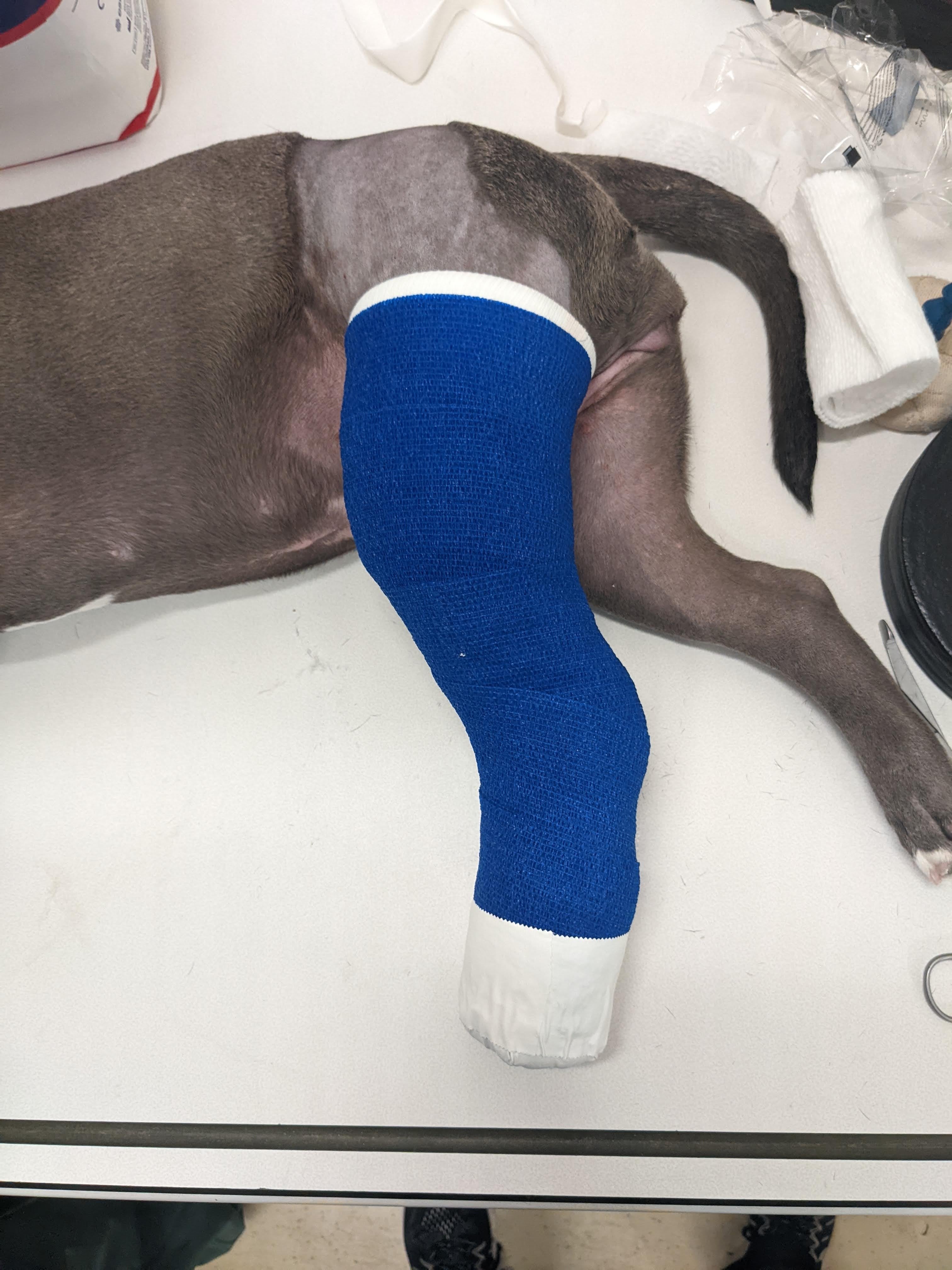
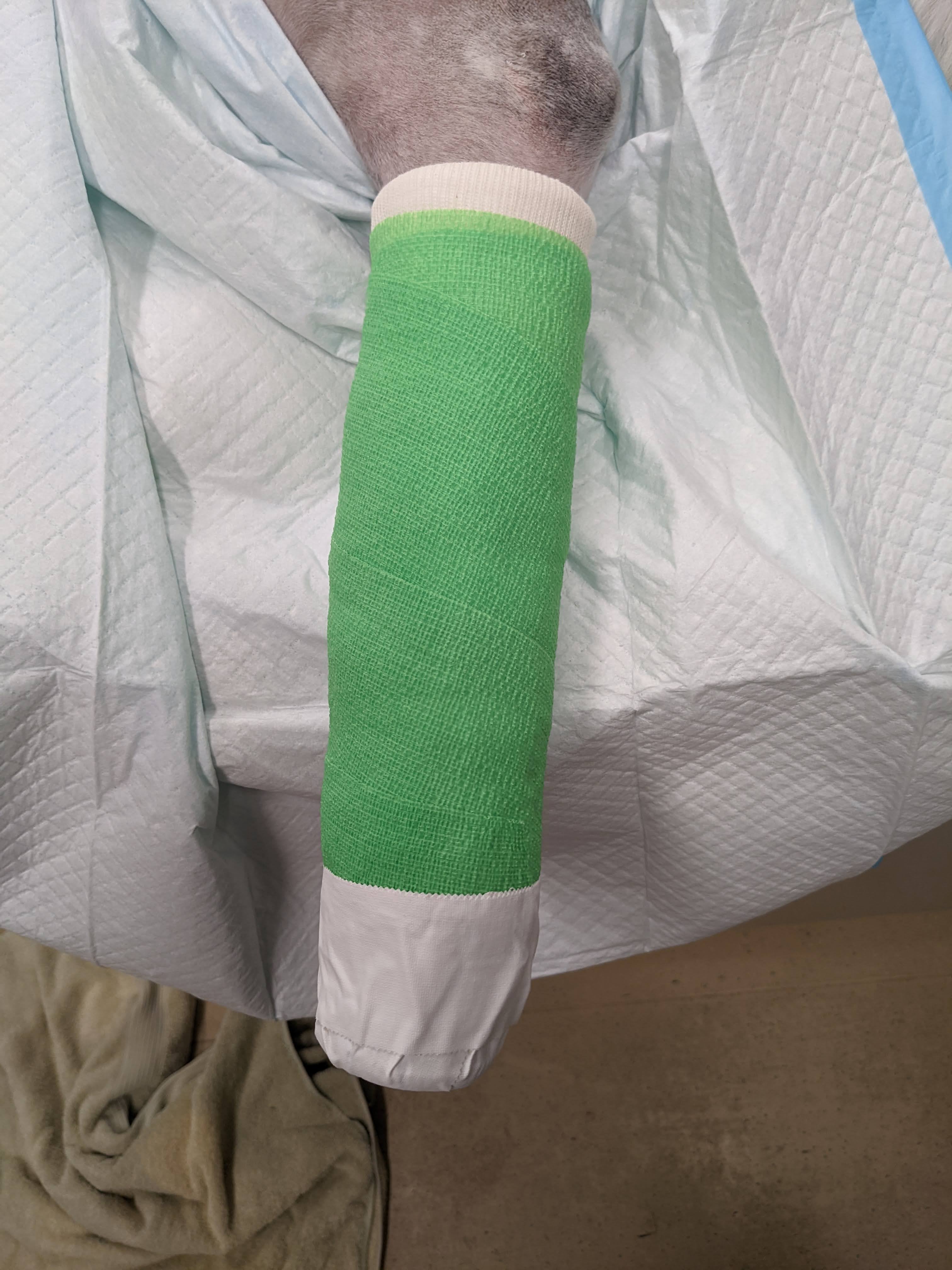
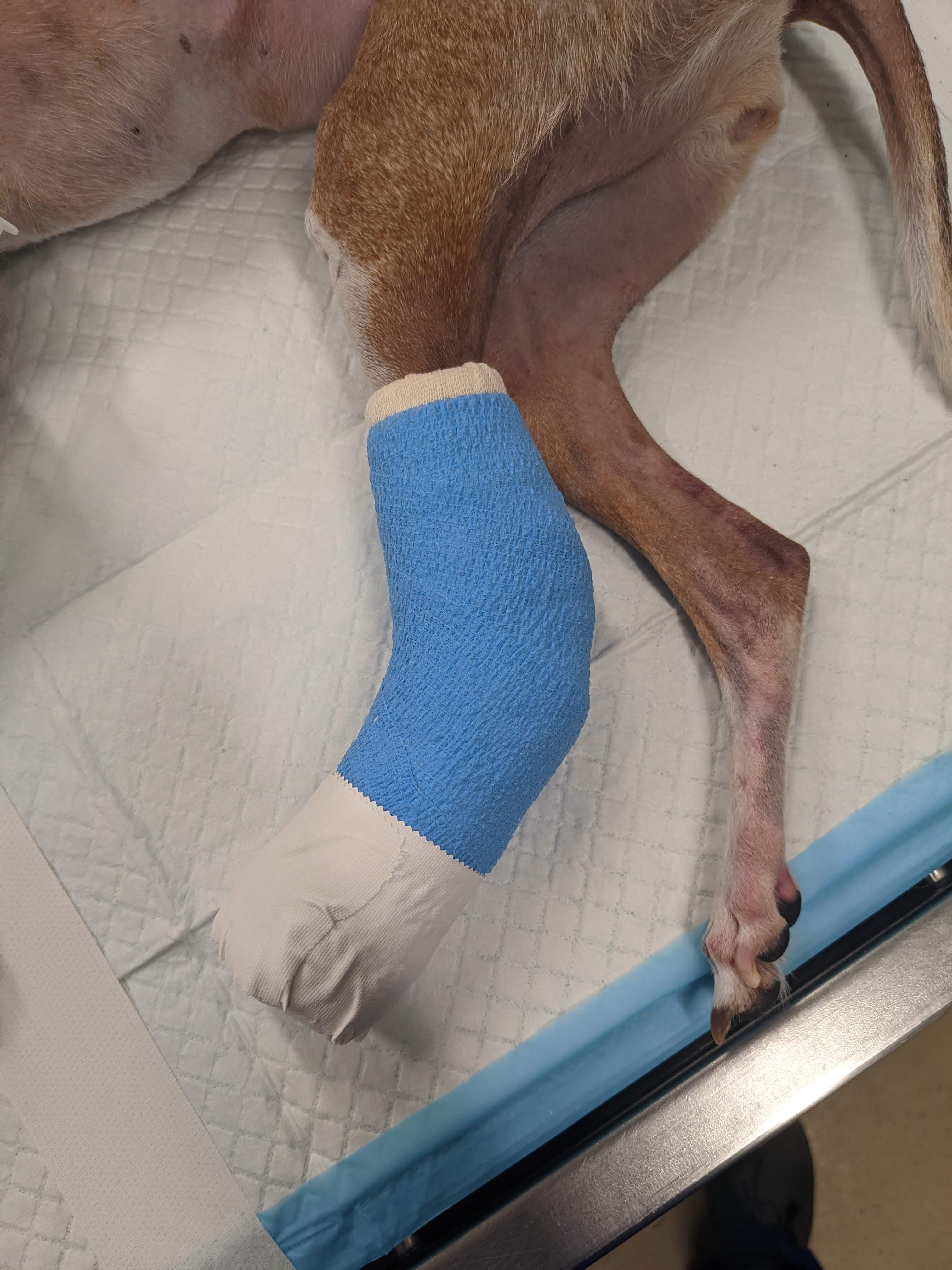
New Slide
Learn moreNew Slide
Learn more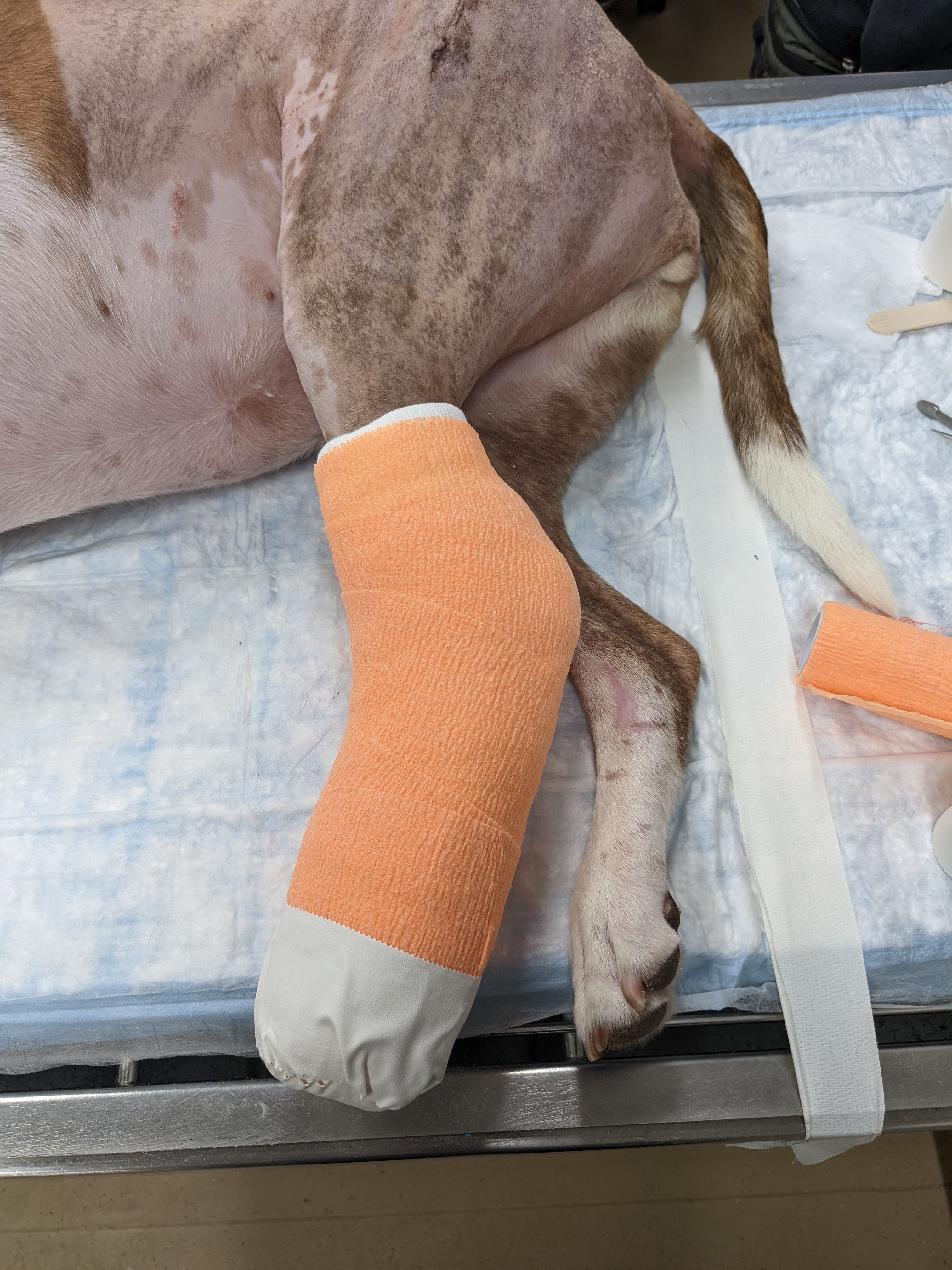








New Slide
Learn moreNew Slide
Learn more








New Slide
Learn moreNew Slide
Learn more








New Slide
Learn moreNew Slide
Learn more
Modified Robert-Jones Bandage
The Modified Robert-Jones bandage is a lighter, more flexible version of the traditional Robert-Jones bandage, designed to provide moderate compression and support for soft tissue injuries, post-operative care, and swelling control without the bulkiness of the original technique. This bandage is a popular choice in both small animal and large animal practices due to its adaptability and ease of application. Because it can be paired with external coaptation, such as a splint or fiberglass cast, the Modified Robert-Jones can often be smaller and more manageable than the traditional version.
Purpose and Applications
The Modified Robert-Jones bandage is commonly used to manage soft tissue injuries, edema, and as a post-surgical support bandage. It’s particularly useful in cases where immobilization isn't as critical, but compression and protection are necessary. Here are some of the most common applications:
- Post-operative care: After surgeries such as fracture repair, soft tissue surgery, or orthopedic procedures, this bandage helps reduce swelling and supports the limb during the healing process.
- Sprains and strains: For mild injuries like ligament sprains or muscle strains, the bandage provides light compression to support the affected area.
- Wound management: When used in combination with other dressings, it provides protection and compression to keep wounds clean and reduce the risk of infection or contamination.
- Edema control: The bandage helps reduce swelling from conditions like lymphedema or post-trauma swelling.
Bandage Structure
The Modified Robert-Jones bandage consists of three layers that work together to provide effective support, compression, and protection:
-
Primary Layer
If a wound is present, a non-adherent dressing (e.g., Telfa pad, gauze, or ointment) is placed directly on the wound. This layer helps protect the wound from contamination and promotes a moist healing environment. -
Secondary Layer
The second layer consists of soft, conforming cast padding or roll cotton, which is applied from distal to proximal (starting at the toes or paw and wrapping upwards). The padding provides compression, reduces swelling, and offers mild support. The key is to ensure that the padding is evenly distributed to avoid pressure sores or areas of too much compression. -
Tertiary Layer
The final layer is a protective, cohesive wrap such as VetWrap or elastic gauze. This layer holds everything in place, provides additional compression, and prevents the bandage from slipping. It should be applied with moderate tension to secure the bandage but not so tightly that it impedes circulation.
Application Tips
- Tightness: It’s important to apply the bandage snugly but not too tight. Over-tightening can lead to restricted blood flow, while a loose bandage may slip or lose its effectiveness.
- Toes and Digits: Always ensure that the toes are exposed to monitor for swelling, color changes, or temperature variations. If the toes are covered, padding should be placed between them to prevent chafing or sores.
- Padding Distribution: Be mindful of applying even pressure and layering of the padding to avoid pressure sores or bandage slipping.
Advantages
- Lightweight: This bandage is much lighter and less bulky than the traditional Robert-Jones, making it easier for patients to move around.
- Versatile: It can be used for a wide range of injuries, from minor sprains to post-operative recovery, making it a great all-purpose bandage.
- Comfortable: The lighter padding and more flexible structure are generally more comfortable for the patient, reducing the risk of irritation or rubbing against the skin.
- Can be paired with external coaptation: Because of its lighter nature, the Modified Robert-Jones can be used in conjunction with a splint or fiberglass cast, making it a smaller, more manageable option for patients that still require some external support.
- Easy to Apply: Compared to the more complex and bulkier traditional Robert-Jones, this modified version is quicker and easier to apply, especially for routine cases.
Limitations
- Not for Severe Immobilization: While it provides support and compression, the Modified Robert-Jones bandage is not intended for complete immobilization of fractures. If rigid support is needed, a splint or cast should be used in conjunction with the bandage.
- Monitoring Required: As with any bandage, it is important to monitor the limb frequently for signs of circulatory compromise, such as swelling, coldness, or discoloration in the toes or digits.
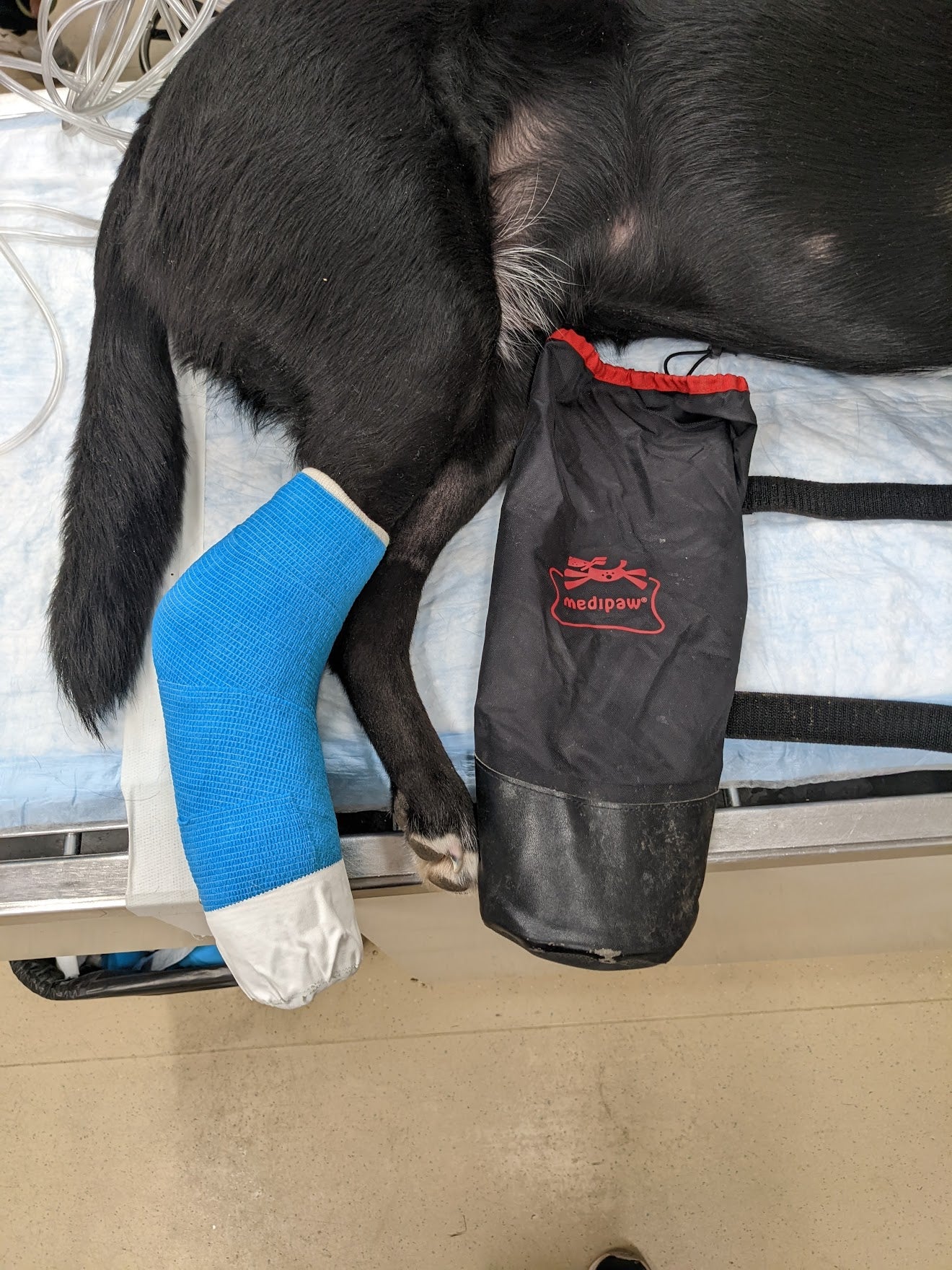
Recommended Product
MediPaw bandage covers are waterproof, breathable protective sleeves designed to keep bandages clean, dry, and intact—especially during outdoor use. They're easy to slip on, reusable, and help extend the life of a bandage while preventing contamination, moisture, and chewing.
Want to see how these bandages are made?
Unlock access to the largest bandaging video library available and watch step-by-step how each bandage is applied correctly and effectively!
